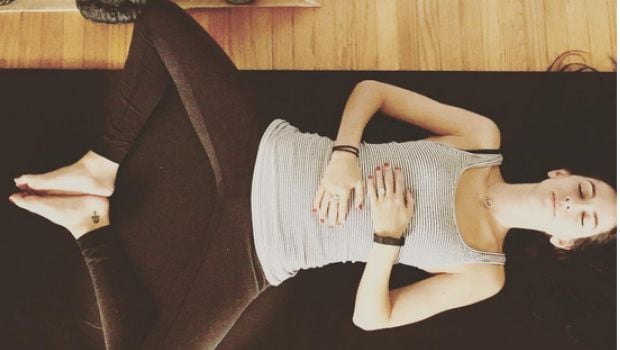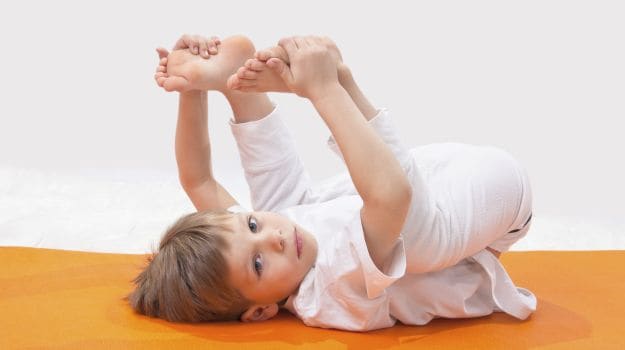Yoga for Depression: 5 Effective Poses That Can Curb the Negativity
Yoga for Depression: 5 Effective Poses That Can Curb the Negativity
While there is medical help available to enable one to tackle with depression, another means of bringing in positivity is yoga. According to a study done by Boston University School of Medicine in the US, joining yoga classes can help patients experience significant reduction in symptoms without the side effects associated with antidepressants. The power of yoga has cured innumerable health problems since time immemorial. With depression too, yoga comes to the rescue of individuals. Often known to improve physical health, yoga works wonders in the case of your mental health and well-being as well. It is a natural and simple way of helping you overcome fears and improving self-esteem and self-worth.
"This
study supports the use of yoga and coherent breathing intervention in
major depressive disorder in people who are not on antidepressants and
in those who have been on a stable dose of antidepressants and have not
achieved a resolution of their symptoms," explained corresponding author
Chris Streeter, Associate Professor at the University. The findings,
published in the Journal of Alternative and Complementary Medicine,
provide support for the use of yoga-based interventions as an
alternative or supplement to pharmacologic treatments for depression
Yoga is believed to relax the mind and lower the heart rate thus reducing anxiety,
which comes along with depression. It is built on the philosophy of
helping one live in the moment, mitigating negative thoughts and
focusing on all good things that life sends our way.
Lamya Arsiwala, The Yoga House Mumbai, suggests several yoga Asanas that could be practiced to enhance one’s state of mind in case of depression.
1. Baddha Konasana (Butterfly/ Bound Angle Posture)
It is often referred to as the “Cobbler pose”, named after the position cobblers sit in while working. The asana helps strengthen the thighs, knees, hips and the back. It is a great anti-depressant pose and improves emotional stability.
How to do: Sit with an upright back, knees bent and holding your feet tightly together. Deeply inhale and flap your bent legs up and down like a butterfly.
Lamya Arsiwala, The Yoga House Mumbai, suggests several yoga Asanas that could be practiced to enhance one’s state of mind in case of depression.
1. Baddha Konasana (Butterfly/ Bound Angle Posture)
It is often referred to as the “Cobbler pose”, named after the position cobblers sit in while working. The asana helps strengthen the thighs, knees, hips and the back. It is a great anti-depressant pose and improves emotional stability.
How to do: Sit with an upright back, knees bent and holding your feet tightly together. Deeply inhale and flap your bent legs up and down like a butterfly.

2. Supta Baddha Konasana (Supported Bound Angle Posture)
Supta means reclining. It is often referred to as the “reclined cobbler pose”. This asana helps one become calm and instills a sense of relaxation.
How to do: Lie down straight on the ground with bent knees on either side of the body. Join your feet and bring the heels closer to your groin. Place your palms next to your hips, facing downwards. Slowly exhale and inhale.

Photo Credit: pranamayayogamedia/instagram
3. Ananda Balasana (Happy Baby Pose)
This
asana relieves fatigue and relaxes the mind. Since it is called the
baby pose, the individual practicing the asana really feels the
happiness of a baby in that moment.
How
to do: Lie down on your back, bringing your knees closer to your
stomach. Inhale and hold your feet with your hands. If you have
difficulty holding your feet then hold on to your ankles in the
beginning and progress towards heel as you continue to do the pose
daily. Breathe gently and rock from one side to the other if you feel
comfortable.

4. Setu Bandhasana (Bridge Pose)
It
is a great asana for reducing stress and anxiety. It takes the shape of
a bridge and hence the name. It also helps maintain normal blood
pressure.
How
to do: Lie flat on the ground, face up and hands on either side. Slowly
lift your hips upwards while inhaling. Bring it back down and repeat.

5. Child's Pose
An extremely soothing posture, the child's pose helps achieve peace and is a great relaxation technique.
How
to do: Sit on your knees. Slowly exhale and bring your torso down
between your thighs. Place your hands on the floor alongside your torso
and release the fronts of your shoulders toward the floor

Practicing these asanas on a regular basis will help overcome depression and improve mental health and well-being tremendously.














No comments
Post a Comment